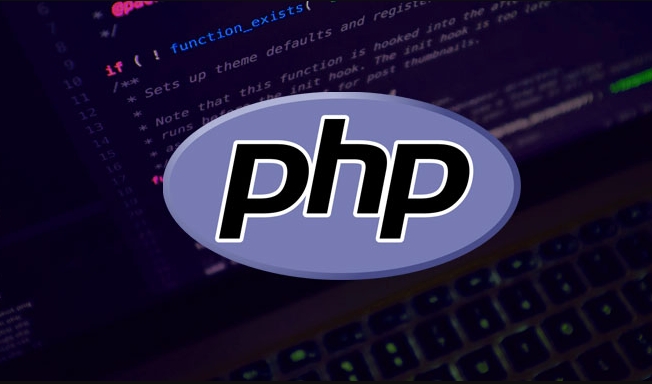The key to handling special characters in PHP regular expressions is to use backslashes for escape. 1. The purpose of escape is to allow the regular engine to treat special characters as ordinary characters to avoid matching failures or syntax errors; 2. Common characters that need to be escaped include ., ^, $, *, , ?, {,}, [,], (,), \, |, :, =,!, etc.; 3. You can use the preg_quote function to efficiently escape the entire string automatically, and pay attention to adding delimiters; 4. Indicating an actual backslash in the string, you need to write two backslashes to ensure that they are correctly passed to the regular engine; 5. It is recommended to use online tools to test and confirm the role of characters to improve accuracy and efficiency. Mastering these key points can correctly handle special character problems in PHP regulations.

The key to handling special characters in PHP regular expressions is "escaping". If you put these characters directly into the regular, it may cause matching failures or syntax errors. The correct way to do this is to use a backslash ( \ ) to tell the regular engine: "This is just a normal character, don't look at it as a special symbol."

Why escape special characters?
There are many characters in regular expressions that have special meanings, . as matching any character, * means repeating the previous element zero or multiple times, ( and ) for grouping, etc.

If you want to match the characters themselves, rather than their special meaning, you must escape. Otherwise, the regular engine will parse them as operators, and the result will not be what you want.
For example:

preg_match('/Price: $10/', $text); // Error: $ is treated as an anchor point at the end of the line
The correct way to write it should be:
preg_match('/Price: \$10/', $text); // Correct: \$ represents a literal $
Which characters need to be escaped?
Not all characters need to be escaped, but the following common characters have special meanings in the regular. If you want to match them, you must add \ :
-
.,^,$,*,? -
{,},[,],(,) -
\,|,:,=,!etc.
Tip: Although some characters have special meanings, they do not need to be escaped in some contexts, such as
[and]only needs to be escaped outside the character class.
How to efficiently escape a string?
If you have a whole paragraph of text that needs to be used as a literal to participate in regular matching, it is too troublesome to add \ manually. PHP provides a function that does this specifically: preg_quote()
The usage is very simple:
$pattern = '/' . preg_quote('price: $10.99', '/') . '/';
The second parameter is the delimiter you use (such as / ), plus it ensures that even the delimiter is escaped to avoid errors.
Note: Don't forget to put the result of
preg_quoteinto your regular expression structure, such as adding/delimiting characters.
Small details during actual use
Pay attention to the number of layers in the backslash in a string : In a PHP string,
\is an escape character, so you have to write two backslashes\\to represent a real\.For example, if you want to match an actual backslash, you should write it like this:
preg_match('/\\\\\/', $text);
It is safer to use
preg_quote: even if you know which characters need to be escaped, some boundary situations may be missed. Usingpreg_quotecan help you automatically handle all possible problem characters.When testing regularities, you can use online tools to assist : for example, regex101.com, which will highlight the function of each character to facilitate you to confirm whether you need to escape.
Basically that's it. By mastering these key points, you can correctly handle special characters in the rules in PHP.
The above is the detailed content of how to escape special characters in php regex. For more information, please follow other related articles on the PHP Chinese website!

Hot AI Tools

Undress AI Tool
Undress images for free

Undresser.AI Undress
AI-powered app for creating realistic nude photos

AI Clothes Remover
Online AI tool for removing clothes from photos.

Clothoff.io
AI clothes remover

Video Face Swap
Swap faces in any video effortlessly with our completely free AI face swap tool!

Hot Article

Hot Tools

Notepad++7.3.1
Easy-to-use and free code editor

SublimeText3 Chinese version
Chinese version, very easy to use

Zend Studio 13.0.1
Powerful PHP integrated development environment

Dreamweaver CS6
Visual web development tools

SublimeText3 Mac version
God-level code editing software (SublimeText3)

Hot Topics
 What are some best practices for versioning a PHP-based API?
Jun 14, 2025 am 12:27 AM
What are some best practices for versioning a PHP-based API?
Jun 14, 2025 am 12:27 AM
ToversionaPHP-basedAPIeffectively,useURL-basedversioningforclarityandeaseofrouting,separateversionedcodetoavoidconflicts,deprecateoldversionswithclearcommunication,andconsidercustomheadersonlywhennecessary.StartbyplacingtheversionintheURL(e.g.,/api/v
 How do I implement authentication and authorization in PHP?
Jun 20, 2025 am 01:03 AM
How do I implement authentication and authorization in PHP?
Jun 20, 2025 am 01:03 AM
TosecurelyhandleauthenticationandauthorizationinPHP,followthesesteps:1.Alwayshashpasswordswithpassword_hash()andverifyusingpassword_verify(),usepreparedstatementstopreventSQLinjection,andstoreuserdatain$_SESSIONafterlogin.2.Implementrole-basedaccessc
 What are weak references (WeakMap) in PHP, and when might they be useful?
Jun 14, 2025 am 12:25 AM
What are weak references (WeakMap) in PHP, and when might they be useful?
Jun 14, 2025 am 12:25 AM
PHPdoesnothaveabuilt-inWeakMapbutoffersWeakReferenceforsimilarfunctionality.1.WeakReferenceallowsholdingreferenceswithoutpreventinggarbagecollection.2.Itisusefulforcaching,eventlisteners,andmetadatawithoutaffectingobjectlifecycles.3.YoucansimulateaWe
 What are the differences between procedural and object-oriented programming paradigms in PHP?
Jun 14, 2025 am 12:25 AM
What are the differences between procedural and object-oriented programming paradigms in PHP?
Jun 14, 2025 am 12:25 AM
Proceduralandobject-orientedprogramming(OOP)inPHPdiffersignificantlyinstructure,reusability,anddatahandling.1.Proceduralprogrammingusesfunctionsorganizedsequentially,suitableforsmallscripts.2.OOPorganizescodeintoclassesandobjects,modelingreal-worlden
 How can you handle file uploads securely in PHP?
Jun 19, 2025 am 01:05 AM
How can you handle file uploads securely in PHP?
Jun 19, 2025 am 01:05 AM
To safely handle file uploads in PHP, the core is to verify file types, rename files, and restrict permissions. 1. Use finfo_file() to check the real MIME type, and only specific types such as image/jpeg are allowed; 2. Use uniqid() to generate random file names and store them in non-Web root directory; 3. Limit file size through php.ini and HTML forms, and set directory permissions to 0755; 4. Use ClamAV to scan malware to enhance security. These steps effectively prevent security vulnerabilities and ensure that the file upload process is safe and reliable.
 What are the differences between == (loose comparison) and === (strict comparison) in PHP?
Jun 19, 2025 am 01:07 AM
What are the differences between == (loose comparison) and === (strict comparison) in PHP?
Jun 19, 2025 am 01:07 AM
In PHP, the main difference between == and == is the strictness of type checking. ==Type conversion will be performed before comparison, for example, 5=="5" returns true, and ===Request that the value and type are the same before true will be returned, for example, 5==="5" returns false. In usage scenarios, === is more secure and should be used first, and == is only used when type conversion is required.
 How can you interact with NoSQL databases (e.g., MongoDB, Redis) from PHP?
Jun 19, 2025 am 01:07 AM
How can you interact with NoSQL databases (e.g., MongoDB, Redis) from PHP?
Jun 19, 2025 am 01:07 AM
Yes, PHP can interact with NoSQL databases like MongoDB and Redis through specific extensions or libraries. First, use the MongoDBPHP driver (installed through PECL or Composer) to create client instances and operate databases and collections, supporting insertion, query, aggregation and other operations; second, use the Predis library or phpredis extension to connect to Redis, perform key-value settings and acquisitions, and recommend phpredis for high-performance scenarios, while Predis is convenient for rapid deployment; both are suitable for production environments and are well-documented.
 How do I perform arithmetic operations in PHP ( , -, *, /, %)?
Jun 19, 2025 pm 05:13 PM
How do I perform arithmetic operations in PHP ( , -, *, /, %)?
Jun 19, 2025 pm 05:13 PM
The methods of using basic mathematical operations in PHP are as follows: 1. Addition signs support integers and floating-point numbers, and can also be used for variables. String numbers will be automatically converted but not recommended to dependencies; 2. Subtraction signs use - signs, variables are the same, and type conversion is also applicable; 3. Multiplication signs use * signs, which are suitable for numbers and similar strings; 4. Division uses / signs, which need to avoid dividing by zero, and note that the result may be floating-point numbers; 5. Taking the modulus signs can be used to judge odd and even numbers, and when processing negative numbers, the remainder signs are consistent with the dividend. The key to using these operators correctly is to ensure that the data types are clear and the boundary situation is handled well.






